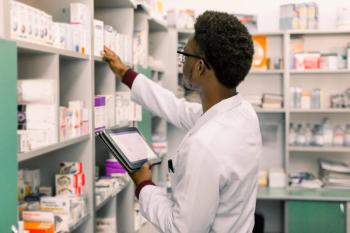
JCAHO sets new patient safety goals for 2005
Institutional pharmacists should get ready for more intensive scrutiny of their operations next year. Half of the 2005 National Patient Safety Goals (NPSGs) set by the Joint Commission on Accreditation of Healthcare Organizations are directly related to pharmacy.
Institutional pharmacists should get ready for more intensive scrutiny of their operations next year. Half of the 2005 National Patient Safety Goals (NPSGs) set by the Joint Commission on Accreditation of Healthcare Organizations are directly related to pharmacy.
That's a plus, said Kasey Thompson, director of ASHP's Center on Patient Safety. "The medication use process is not inherently safe because medications are not inherently safe," he explained. "Organizations are going to have to recognize the vital role of the pharmacist. Our current role and capacity is going to have to increase."
JCAHO expanded its NPSG list from seven goals in 2004 to an even dozen goals for 2005. The increase reflects the commission's role in accrediting a variety of healthcare organizations, not just hospitals, said Teresa Stewart, director of JCAHO's Office of Quality Monitoring.
Goal 3 targets medication safety. Requirements include removing concentrated electrolytes from care units; standardizing and limiting the number of drug concentrations available in the organization; identifying look-alike, sound-alike drugs; and reducing interchange errors.
Goal 5 calls for boosting infusion pump safety by using administration sets with built-in free-flow protection.
Goal 7 aims to reduce the risk of healthcare-associated infections. Organizations must demonstrate compliance with hand hygiene guidelines from the Centers for Disease Control & Prevention. All cases of unexpected death or major loss of function associated with a healthcare-acquired infection must be managed as sentinel events.
Goal 8 calls for the accurate and complete reconciliation of medications across the continuum of care. Organizations must develop systems to obtain and document a complete list of medications patients are taking when admitted. A similar medication list must be transmitted to the next provider of service when a patient is discharged, transferred, or referred.
Goal 10 calls for reducing the risk of influenza and pneumonia in older adults with immunization programs.
"These goals don't appear out of thin air," Stewart said. "We talk to the cream of the crop in patient safety, groups like the Institute for Safe Medication Practices. We ask them to go into their own databases and tell us what the greatest sources of error are. Most sentinel events come from abbreviations."
ISMP said the goals would help make health care safer for practitioners as well as patients. "There are a lot of pressures in the hospital to save time, to take shortcuts, to do things as efficiently as possible," said ISMP founder and president Michael Cohen. "That's the problem with electrolytes, with drug names, with abbreviations. The commission, by providing this kind of oversight, is moving in the right direction."
But safety is not an easy move. Thompson said Goal 8, reconciling medication usage across the continuum of care, would be the toughest. Few healthcare organizations have seriously addressed continuity of care. "We have gone on too long with the notion that you can provide safe and effective care with incomplete information," he said. "Community pharmacists can't evaluate prescriptions if they don't have critical lab results or diagnoses or hospital discharge orders. Hospitals can't adequately treat patients if they don't know what those people have been taking at home. This is just the beginning of the dialogue."
Newsletter
Pharmacy practice is always changing. Stay ahead of the curve with the Drug Topics newsletter and get the latest drug information, industry trends, and patient care tips.





























































































































